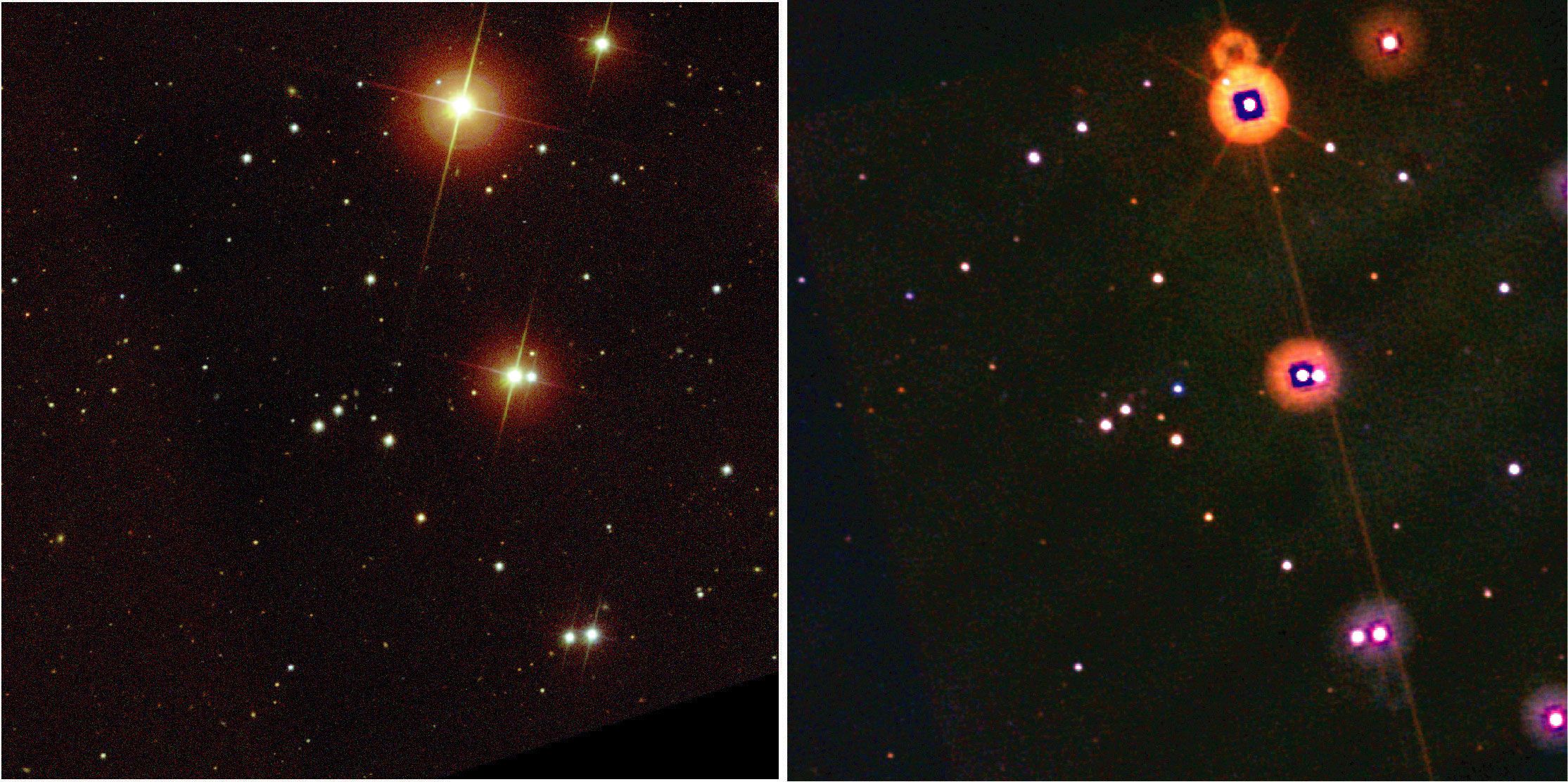What is it? Something is happening in a small portion of the sky toward the
constellation of
Aries. Telescopes around the globe are tracking an unusual transient there as it changes day by day.
No one is sure what it will do next. The entire
space mystery began on February 18 when the Earth-orbiting robot
Swift satellite noticed an unusual transient began to glow dimly in
gamma rays. Dubbed GRB 060218, the object is a type of gamma ray burst (GRB) but the way its brightness changes is very unusual. Since detection,
GRB 060218 has been found to emit light across the
electromagnetic spectrum, including radio waves and visible light.
Pictured above, the Sloan Digital Sky Survey (SDSS)
image of the field of GRB 060218 well prior to its Swift trigger is shown on the left, while the same field, taken by the orbiting Swift satellites' ultraviolet telescope after the Swift trigger, is shown on the right. The
oddball GRB is visible in the center of the right image. Subsequent observations found a
redshift for the transient of z=0.033, showing it to be only about 440 million
light years away, relatively nearby compared to typical GRBs. Whether GRB 060218 represents a new type of
gamma ray burst, a new type of
supernova, or an unusual link between the GRBs and supernovas has become an instant topic of research.

